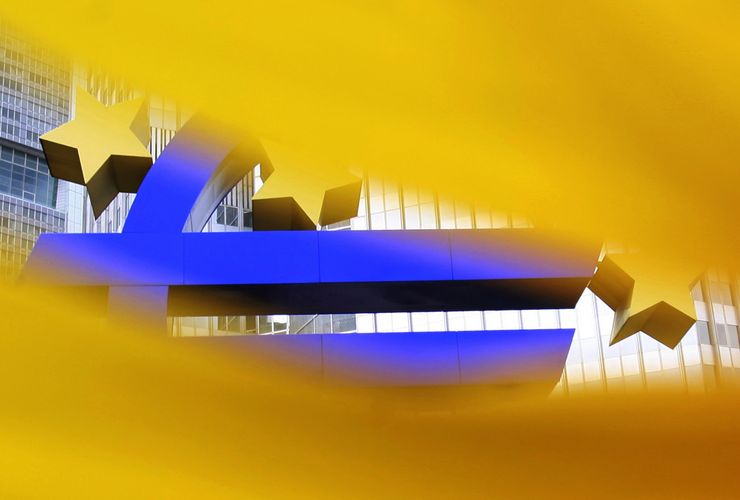Although European leveraged markets have suffered this year, the US has appeared on a white horse, as long as they are familiar with the company and it has US dollar earnings.
To view the digital version of this report, please click here.
For much of this year, the leveraged markets in Europe have been filled with gloom. Although the US primary market has remained active, albeit beaten up by concerns about the European debt crisis, in the first half of the year European leveraged loan volume was down a hefty 41%, at €16.3bn, on the same period last year, according to S&P.
But there has been one bright spot. What has saved the leveraged market is the openness of US investors to European paper. European issuers pushed €13bn of high-yield debt to the US, or 45% of total 2012 issuance to date.
During the second quarter, a record high €10.8bn of loans from European borrowers went across the Atlantic. Loans for newcomers like medical device firm BSN Medical, German plastics company Kloeckner Pentaplast as well as seasoned veterans like German healthcare firm Fresenius were placed in the US. This activity brings the Yankee loan year-to-date total to €21.5bn, almost double the €11.23bn issued during the whole of last year, according to Thomson Reuters LPC.
What has helped is that the valuation of European high-yield issues looks pretty tempting to US investors. Although the market might be small – corporate high yield is around €180bn versus four and a half times more in the US, according to figures from Morgan Stanley – the average price of bonds was 94.62 in early June and returns, year-to-date, are 11.54%. Compare that with the US high-yield market with an average price of 101.3 and a total return of 8.574% this year and it is easy to see the attraction.
And it is as good for loans. The lower pricing and covenant-lite terms offered by US accounts are attractive both to European borrowers and to underwriting banks faced with a lack of liquidity at home and fearful of a risky outlook that could make a syndication process difficult.
German auto parts supplier Schaeffler, Belgian chemical company Taminco and banking software group Misys have all taken advantage. For example, in May, Misys launched a US$1.06bn-equivalent cross-border buyout loan, split between a US$730m, seven-year term loan B, guided to pay 500bp–525bp over Libor; and a €250m, seven-year term loan B, guided to pay 550bp–575bp over Euribor. Both tranches have a 1.25% Libor floor and an OID of 99. There is also a US$125m revolver.
Peaks and troughs
This is not to say that US investors have become the get-out-of-jail-free card for European corporates. They will not just buy anything that turns up on a roadshow. There has to be some name recognition for the company, it has to be in a familiar sector and it should have earnings in US dollars.
“Whilst the investor base is much more vocal these days, when there is a dearth of good quality assets, terms can be pushed. We see that peaks and troughs in liquidity are still a big factor in price and terms,” said Scott Boothby, head of transaction group, leveraged finance at Commerzbank.
What is clear is that there has been a marked differentiation in the pricing according to names; even more than one might expect. In mid-August, Belgium’s largest cable operator Telenet sold a two-tranche €700m bond: a €450m 6.25% August 2022 bond and a €250m 6.75% August 2024. The paper was oversubscribed – it was this that allowed the 12-year tranche to be added – both tranches were priced at par and both traded up after the break.
“Historically, a six handle in high-yield land was unprecedented,” said Peter Higgins, fund manager at BlueBay Asset Management. “But good quality credits now have market access sub 7%.” It should be noted that Telenet is rated BB.
Compare that with German plastics firm Kloeckner Pentaplast, which priced a €255m five-year non-call 2.5 senior secured second-lien bond in mid-July. Although it priced inside guidance, it still went for 11.625% thanks to its Caa1/CCC (stable) ratings.
As bankers returned from the beach at the end of August, the difference in pricing became more marked. A useful tailwind from the Crossover index which slipped below the 500bp mark for the first time since July last year after a positively received ECB rates decision meeting, along with pent-up demand after thin issuance over the summer, saw funding costs drop to some of the tightest the market has ever seen.
The first week of September alone saw roughly €1.3bn of issuance. Irish packaging company Smurfit, German cable company Unitymedia and Spanish telecoms Telefonica printed deals in this benign environment inside 6% – at 5.125%, 5.5% and 5.811% respectively.
A concern that has emerged among industry watchers has been rising leverage levels. The average debt-to-Ebitda hit 4.7 times in the second quarter up from 4.4 times in the first quarter, which is half a turn higher than 12 months ago.
BSN Medical’s €865m-equivalent loan carries a net leverage of 6.4 times. But as Jeremy Selway, managing director of leveraged loans at Deutsche Bank pointed out, this should be taken with a pinch of salt. “There are simply too few data points,” he said. “You can’t extrapolate the state of the market from two deals.”
How long is the US likely to keep investing in European debt? While several bankers speak of continued volatility in Europe, there is a sense that this is an irritation rather than a need to shut up shop. As for the US elections, bankers openly laugh at the suggestion that that might cause problems. “No one is talking about that at all,” said one banker.
Fallen off the cliff
The lookout for the rest of the year is – like the first half – for refinancing rather than M&A activity. It is notable how much M&A activity has fallen off a cliff this year. To put it into perspective, globally, deals below US$5bn currently total US$1trn, a decline of 13% on last year, while it is even more marked for deals above that figure. They have seen a decline of 38% in terms of value of deals and by 43% by number of deals, according to Thomson Reuters. Of the €21.5bn of Yankee loans raised so far this year, 19% of them were M&A related.
But there are grounds for optimism. “It is going to be better than the second half of last year. The debt is there in Europe to support buyouts – we just need more M&A transactions to complete,” said Deutsche Bank’s Selway.
But there is no doubt that European leveraged companies have been successful in dealing with their 2013 maturities.
“In many cases, it seems to be easier to refinance than to get a deal,” said Gary Simmons, director of the leveraged finance division at AFME. Maturities for 2013 have fallen by 75% over the past two years to about €13bn according to figures from Moody’s which now means that there is much less of a risk of a sharp rise in defaults if high-yield markets fail to recover. Nonetheless, a Sword of Damocles in the form of around €60bn leveraged loan maturities for 2014 and 2015 remain.
Still, despite no abatement in the euro crisis, bankers remain optimistic. “As for the rest of the year, my glass is half full. There is a wave of refinancing out there. Chipping away at the refi wall should provide opportunities,” said Commerzbank’s Boothby.

